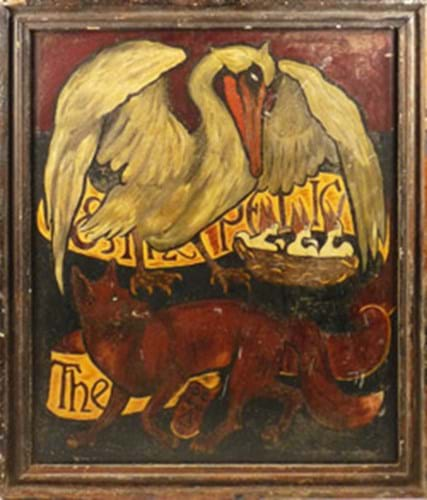
The pub was set up by the Grayshott and District Refreshment Association in 1899 along the lines of a temperance house (although alcohol was available) and the sign had been painted by the well-known Arts and Crafts artist/designer Walter Crane.
In 1913 when The Fox and Pelican was sold to The People's Refreshment House Association, the sign was felt to have deteriorated so a copy was created and the original handed over to Grayshott Parish Council for safe keeping.
Council minutes from January and April 1914 note the hanging of the sign in the village hall and the agreement for restoration work to be carried out on it. But then the trail runs cold. Later in 1914, the hall was turned over to the military authorities.
In his letter to ATG, Mr Peskett asked "What has happened to the sign which would now be considered an important work of art? Was it destroyed in the turmoil of the First World War or simply lost?" He added that although the original ironwork for the sign was still in place, the sign board had been replaced several times.
So has an answer to the mystery turned up in Essex at Sworders saleroom?
The pub sign pictured here, which has been consigned to the auctioneers' April 27 sale by a vendor from Wales, came from a skip outside the Grayshott pub during refurbishment around 30 or 40 years ago, from which the vendor was given permission to retrieve the contents.
Sworders' sign has been repainted to the side that depicts the actual animals but the other, bearing the pub's name surrounded by oak leaves, carries the original paintwork and there is also an indistinct artist's monogram featuring a crane within a square.
Its appearance certainly provides another twist to the fascinating, if convoluted, tale of a piece of British folk art. It will carry an estimate for £500-800 at Sworders.
By Anne Crane




